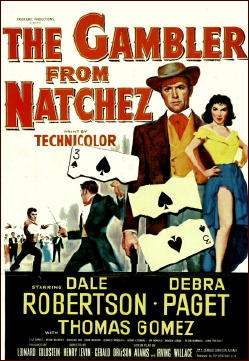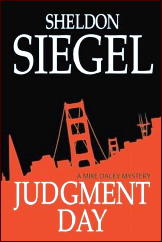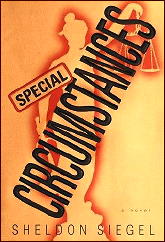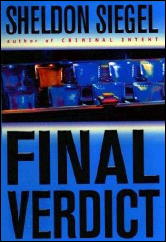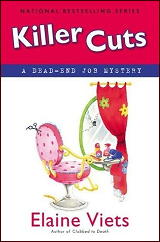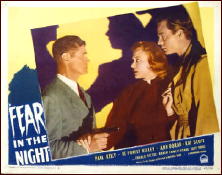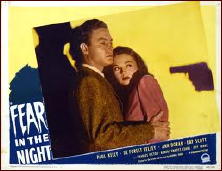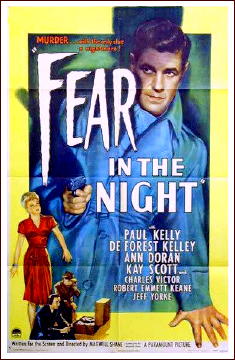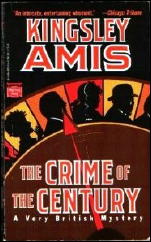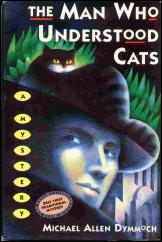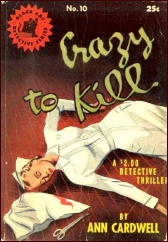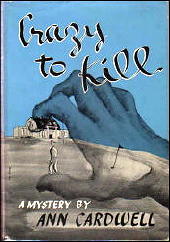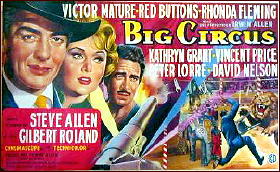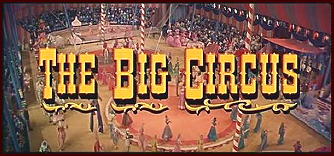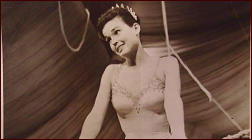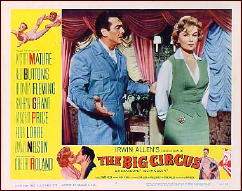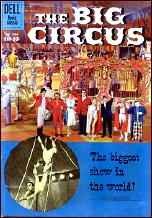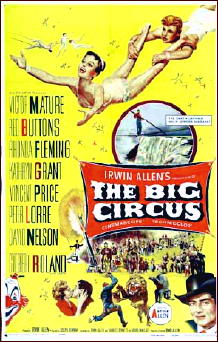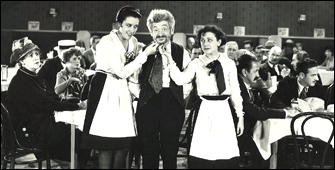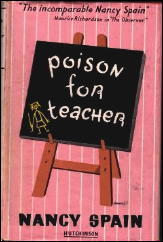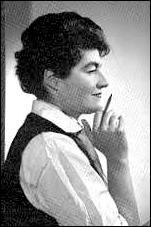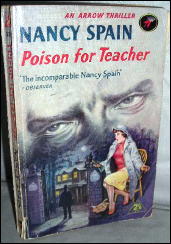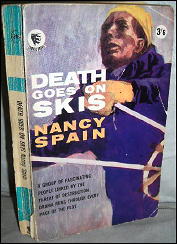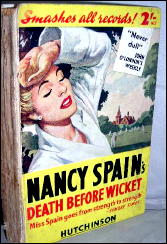Sun 6 Feb 2011
A Movie Review by David L. Vineyard: THE GAMBLER FROM NATCHEZ (1954).
Posted by Steve under Action Adventure movies , Reviews[9] Comments
THE GAMBLER FROM NATCHEZ. 20th Century Fox, 1954. Dale Robertson, Debra Paget, Thomas Gomez, Kevin McCarthy, Lisa Douglas, Douglas Dick, Jay Novello, Woody Strode, John Wengraf, Donald Randolph, Henry Leontal, Parley Baer, Peter Mamakos. Screenplay by Gerald Drayson Adams & Irving Wallace, based on a story by the former. Director: Henry Levin.
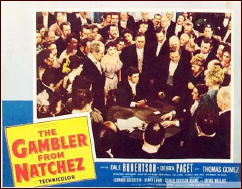
A Southern swashbuckler rather than a Western, this entertaining outing is a canny variation on The Count of Monte Cristo.
Robertson is Captain Vance Colby, of the Louisiana Volunteers, returning in the early 1840’s to New Orleans after four years serving under Sam Houston in Texas. The son of a well known gambler, he returns to encounter social prejudice from dilettante Andre Rivage (Kevin McCarthy) after aiding Rivage’s beautiful sister Yvette (Lisa Douglas) with her carriage.
As Colby rides to meet his father after leaving his cold reception at Rivage’s plantation Araby, he is wounded when ambushed by Rivage’s man Etienne (Peter Mamakos), but escapes to the river where he is rescued by Melanie Barbee (Debra Paget) and her riverboat captain father (Thomas Gomez) whom he met earlier, and their man Josh (Woody Strode).
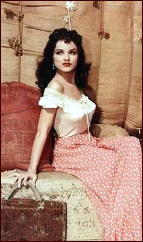
Recovering from his wound he returns to New Orleans to find his father murdered by Rivage, accused of cheating, with three witnesses; Claud St. Germaine (Douglas Dick), the weak fiancee of Yvette; Nicholas Cadiz (John Wengraf), the owner of the casino the Saint Cyr where his father was killed; and Jay Novello, the waiter serving that night.
With the police (in the person of the Commissioner played by Henry Leontal) on the side of the city’s Creole elite and the wealthy Cadiz, Colby must discover why his father was set up and murdered and avenge himself on the three men who committed the crime after having lost their new riverboat to Colby’s father in a game of 21, but in such a way the police can’t touch him.
The day he came home from Texas Colby pocketed a playing card, the three of spades, now he has written the names of his father’s murders on it and sets out to destroy them one by one.
The film is handsomely shot, with fine sets and costumes, and Robertson makes a dashing hero — even doing his own blade work in the final sword fight with McCarthy and handling it quite well.
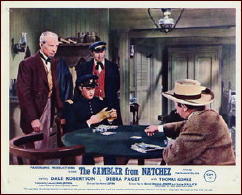
The theme of the three of spades runs throughout the film, with the neat touch that in the final confrontation with McCarthy in a game of 21, it is the three of spades that puts McCarthy over 21 and loses the game for him, taking both the riverboat, and Araby, his family estate.
A well handled plot well written by Adams and Wallace, capable direction, and a handsome cast all combine to insure this one delivers everything it promises and more. Robertson is steadfast and dashing, Paget gorgeous, Gomez up to his usual scene stealing, and McCarthy a fine villain, by turns arrogant, snide, scheming, cowardly, and ruthless.
There are no surprises here, save perhaps for how well it all plays, and how good this little film really is. Dumas himself would have been proud to have inspired it.
